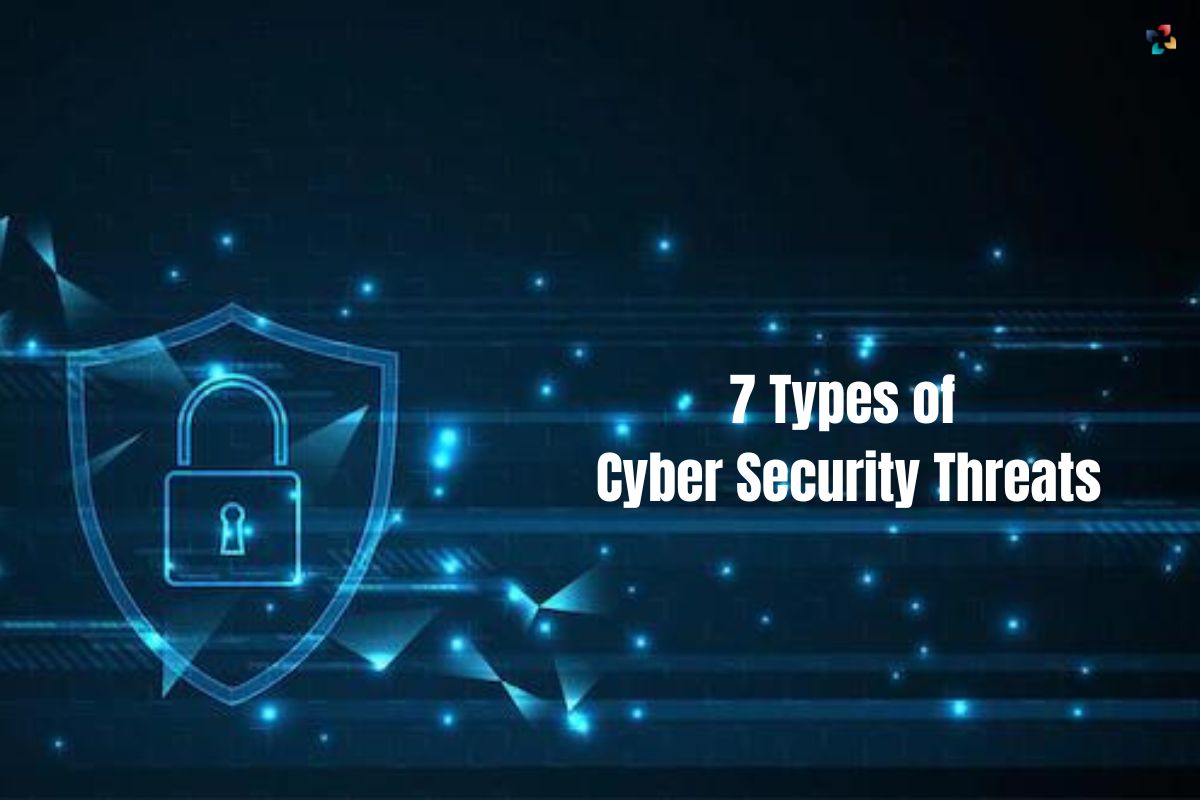Types of Cyber Security Threats are the safeguarding of software, hardware, and data that may be accessed over the Internet by malicious hackers and other online intruders. This method is used by both individuals and corporations to safeguard against intrusion into data centers and other computerized systems. When it comes to protecting your business, your system, and your sensitive data from intruders, a robust cybersecurity plan can give a reasonable security force.
Defenses against various Types of Cyber Security Threats that try to disable or otherwise disrupt the functioning of a system or device are another important aspect of cyber hygiene. The proliferation of connected devices and software in today’s businesses, as well as the deluge of data (much of it private or secret), have only served to highlight the critical nature of cyber security threats.
The situation is made more difficult by a large number of cyber attackers and the increasing complexity of their approaches. Information thieves and hackers may utilize private or company data to commit fraud, steal identities, or get access to accounts. To keep your private information safe, you need the help of someone trained in cybersecurity. The many forms of cybercrime that might compromise your computer are detailed here.
Here are 7 Types of Cyber Security Threats;
1. Denial-of-Service Attacks
It’s not uncommon for businesses or big computer systems to become victims of denial-of-service (DoS) assaults. These types of cyberattacks are conducted by overwhelming a network or data center with an excessive volume of traffic, hence preventing the provision of regular services to legitimate customers. Types of Cyber Security Threats Hackers may try to use other methods to get data if the system goes down.

Using various network security protocols, your systems may be protected from such assaults. Firewalls, virtual private networks, content filters, email scanning software, and other load-balancing technologies may all fall into this category. If you want to stop hackers from getting into your system, you should minimize the role that humans play.
2. Phishing Attacks
Most often Types of Cyber Security Threats, attackers will send out a large number of emails to a wide range of targets, asking for actions like clicking on a phishing link or entering personal information. Phishing emails might seem like they’re from reputable companies like Apple or Microsoft’s Office 365. It’s common practice for senders to request that you log in using a link and a password. A hacker obtains your password and uses it to access your account.
The best way to protect yourself against these kinds of assaults is to check the sender’s address and give the email a thorough once-over before clicking on any links. Fake emails sometimes use addresses that vary somewhat from the recipient’s real one, either because of the addition of extra spaces or other characters. In addition, when you move your mouse pointer over a link, the destination page will load in a new tab. To protect yourself from phishing scams, you should have an email virus scanner.
3. Structured Language Query injection (or SQL)
SQL Types of Cyber Security Threats, or Structured Query Injection, is a kind of cyberattack that targets databases and is used to take control of them or steal their contents. Attackers use SQL injection attacks to compromise data-driven apps and release malicious code. Your access to the database’s private data is now complete.
4. Password Attack
Passwords are the most often used security method for Cyber Security Threats. Put them to use while signing into your computer, phone, or music player. Social engineering is often used as a method of password assault. This might be anything from sending phishing emails or checking your social media to watching over your shoulder as you write.

Strong passwords that are often changed are the best defense against password assaults. Using the same password for several accounts is not recommended, and neither is using just lowercase letters and capital letters.
5. Malware
Malware cyber security threats are short for malicious software, and it comes in many forms that may damage computers. Trojan, worm, and virus are all phrases you may be familiar with. This jargon defines the stages of a computer’s infection by malware.
One example of malicious software is a worm, which is a self-replicating program that may spread from system to system. Malicious malware that does not replicate itself but instead masquerades as a legitimate application is called a Trojan. When a person opens a malicious executable file, it becomes permanently stored on their hard disk.
Viruses are a kind of malware that spread by the usage of a separate piece of software. The virus injects harmful code into an application, which then allows the infected user’s computer to carry out the infection’s intended activities.
Spyware is a sort of malware that secretly monitors the online activities of users without their knowledge of Types of Cyber Security Threats. Spyware may track internet activity and record keystrokes. Avoid visiting questionable websites, clicking on pop-ups, or opening emails from unknown senders to keep your computer safe. Having up-to-date anti-malware software installed is also essential.
6. Man-in-the-Middle Attack
A man-in-the-middle (MITM) attack occurs when a third party, usually a malicious application, intervenes between the victim and the resource they are attempting to reach. If a user goes into Google Drive on their device for a Business account when the MITM attack software is in between them and Google, the user will unwittingly provide Google’s credentials to the malicious application.
What Is Cyber Security: How It Works?
Then the dangerous software may access your account. Protect yourself from these attacks by only visiting websites that begin with the secure protocol HTTPS. It’s the “S” that’s the most important to show that your website is secure from Types of Cyber Security Threats. Another safety measure is to avoid using a router that is accessible to the general public. Since no password is required to access your account, it is vulnerable to many potential threats.
7. Drive-By Downloads
Drive-by downloads Types of Cyber Security Threats are very perilous since they often aren’t the result of human mistakes or deliberate action. A user may experience one of these events without initiating it by doing anything malicious. In most cases, drive-by downloads get the wrong information from websites. A person visits a website, and without realizing it, the application is installed on their computer.

Protecting your computer from these Types of Cyber Security Threats is as simple as using antivirus software to scan downloaded files for malicious malware. Popular anti-virus software can detect potential dangers and isolate them before they can do any harm.
Bottom Line
Bringing about awareness of these kinds of attacks is just as necessary as actually protecting your data from them. With the right kind of cyber security services, you can keep your data safe and secure. In times like these, where data availability is ample, and considering its vulnerabilities, it is important to safeguard yourself from such types of cyber security threats. A strong security infrastructure is the way to go! Keep your data safe from different types of cyber security threats and scale your business to new heights.







